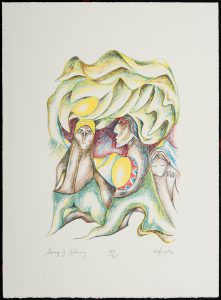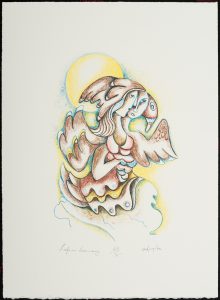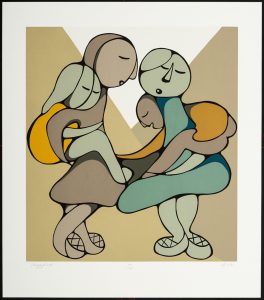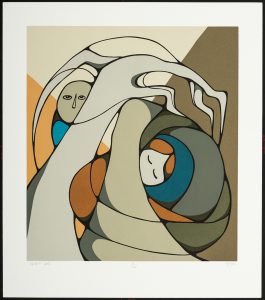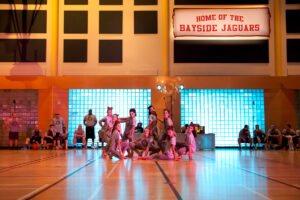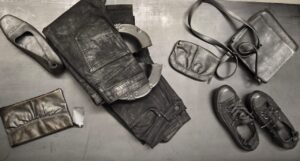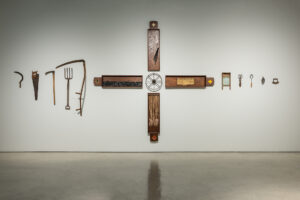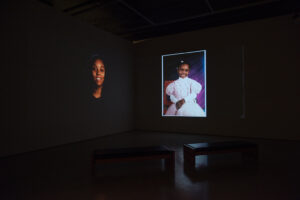Curated by Julie Rae Tucker
“If my work as an artist has somehow helped to open doors between our people and the non-Native community, then I am glad. I am even more deeply pleased if it has helped to encourage the young people that have followed our generation to express their pride in our heritage more openly, more joyfully than I would have ever dared to think possible.”
– Daphne Odjig (undated)
About the exhibition:
Daphne Odjig is renowned as the “grandmother of Indigenous art.” She is a source of inspiration and a respected matriarch for many Indigenous peoples working in the culture industry. Odjig forged a path for herself and the following generations of artists. She made space for fellow First Nations artists to make a name for themselves and worked to raise the profile of the Woodland School through her leadership in forming Professional Native Artists Inc. alongside Alex Janvier, Jackson Beardy, Eddy Cobiness, Norval Morrisseau, Carl Ray and Joseph Sanchez. The artworks in this exhibition are prints or originals from Tales from the Smokehouse, Motherhood Series, Jerusalem Series, Childhood Remembrance Suite, Prayer Series and the Sick Children’s Hospital Series. They depict mothers in action, teaching children acts of care, connection and play. These teachings illustrate ways of being that are important to Anishinaabe culture.
Odjig worked in Northern Manitoba during the mid-1960s. She witnessed the cultural upheaval of the Chemawain Cree Community, who had relocated from their territory to the community of Easterville because of a hydroelectric dam project. Her response was to produce a series of ink drawings documenting the difficult living conditions caused by their removal. These images have become known as The Series of the North. In the film Noissim, the director Sonya Ballantyne learns of her grandmother’s traumatic past through a drawing titled Virginia and Gladys by Daphne Odjig. This exhibition unites this original pen and ink drawing with the film. The film depicts just one example of how Odjig’s art practice profoundly impacted one person’s life.
This exhibition is dedicated to those people who “mother” and support us throughout our lives. Like Daphne, they are the people who show us who we can be.
This project uses technology developed by VibraFusionLab.
VibraFusionLab is an interactive creative media studio that promotes and encourages the creation of new accessible art forms, including the vibrotactile. The Lab investigates the potential of vibration as a form of inclusive artistic expression for artists and arts presenters. It investigates new experiences of sensory accessibility for participants and audiences of all abilities. VibraFusionLab is accessible to hearing, deaf, blind and disabled artists and audiences alike. VibraFusionLab represents considerable potential in generating artistic development and innovative research in vibration and the tactile as a creative modality.
Artist Biography:
Internationally recognized and renowned artist Daphne Odjig was born September 11, 1919, and raised on the Wikwemikong Unceded Territory on Manitoulin Island (Lake Huron), Ontario, Canada. Her father and her grandfather, Chief Jonas Odjig, were Potawatomi, descended from the great Chief Black Partridge. The Odjig family was among the Potawatomi who migrated north and settled in Wikwemikong after the war of 1812. The Potawatomi (Keepers of the Fire) were members of the Ojibwa and Odawa of the Three Fires Confederacy of the Great Lakes.
